The green shoots of normal life return to northern Syria
Having visited parts of northern Syria since 2018, Borzou Daragahi has witnessed a growth in activity, population, and serenity for a people who have suffered one of the most brutal wars in recent history
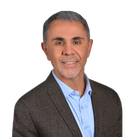
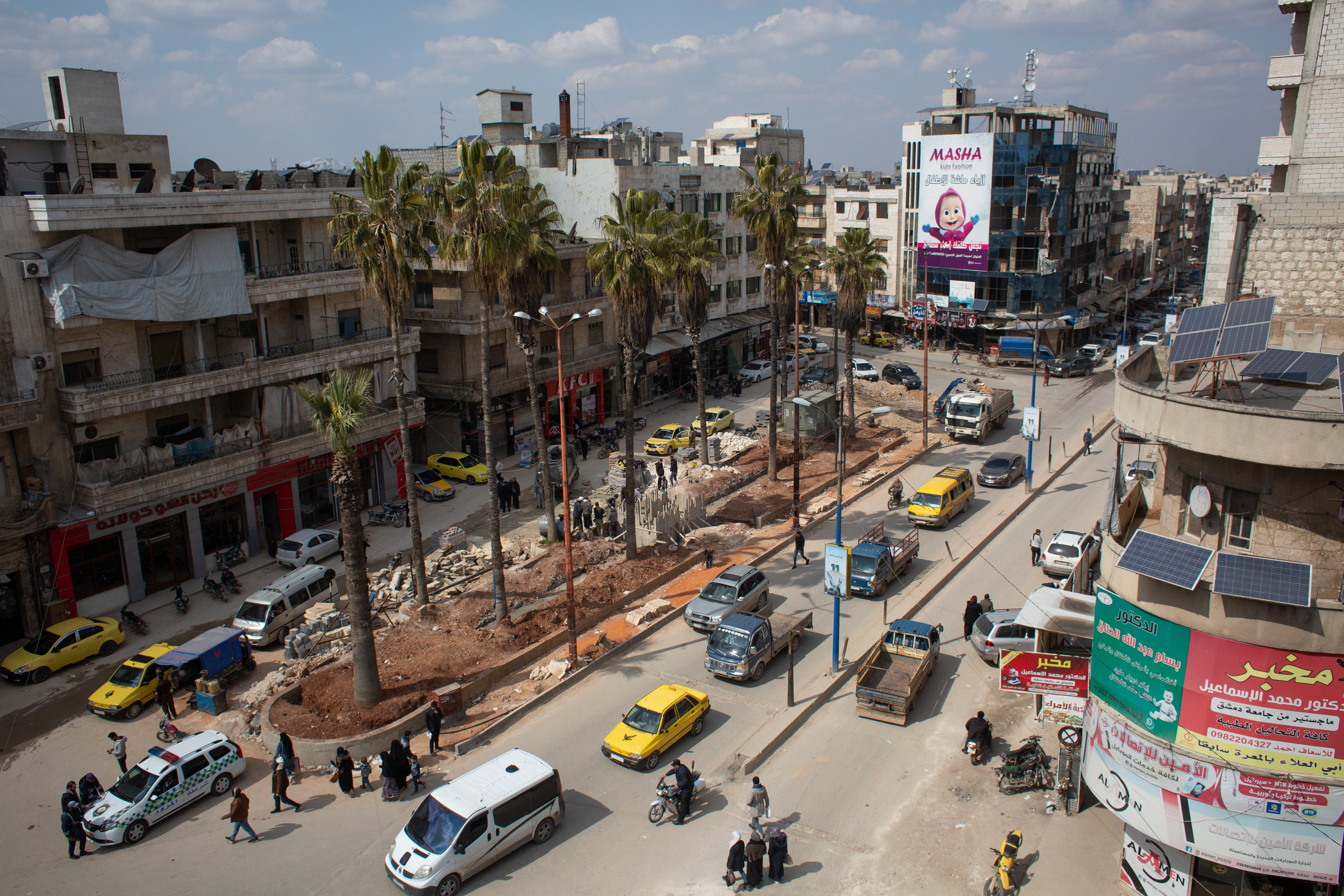
The earth-shaking thuds of the bombs have largely subsided. On the streets of the ramshackle city of Idlib and in its outlying areas, there is instead a cacophony of hammers. They tak-tak-tak away on new buildings rising up from the rubble, and on new roads and pavements being built to accommodate the swelling population.
At a brand new American-funded maternity hospital in the centre of the city, newborns rest in state-of-the-art incubators in the neonatal intensive unit care, nurses in gleaming uniforms gently taking care of them. The facility was opened in February.
“It’s much better now,” says Dr Najwa Khuzeirah, the 39-year-old obstetrician overseeing the shift. “The difference now is that there is more security and safety, and we can make a better life for the babies.”
In Syria’s war-ravaged, rebel-held northwest, life is still largely miserable. The poor and the displaced shelter in tent encampments without sewage or running water. The grief and anguish of a decade of war darken the brightest of days. Bombs, mortar fire and rockets – as well as occasional air strikes – continue to shake the calm, despite a ceasefire between rebel groups opposed to Bashar al-Assad and the Russian and Iranian-backed Damascus regime that has stretched more than two years.
But young men and women have begun filling up at the region’s two universities. Electric power has been largely restored, with the help of the region’s patrons in Turkey. Commerce and a semblance of the agricultural economy that has been the mainstay of the largely rural region has begun to return. Some of the war damage has been repaired.
In frenetic, traffic-clogged downtown Idlib, which has grown into a city with as many as 1 million inhabitants, there is even an ersatz “KFC” serving up fried chicken seemingly with little regard for western trademark laws.
Crucially, parents are allowing their children back to school. They amble along streets to and from classes. They go on field trips to the local museum. Families are settling down.
“People got tired of moving all the time and looking only to what their next step was,” says Abdel Kafe al Hamdou, a political activist who teaches English literature at the University of Aleppo’s branch in Azaz. “These last few years have created some feelings of stability among people. They started to have time to think about what they should do.”
During a recent two-day trip to Idlib province and half a dozen day trips into various parts of northern Syria since 2018, I have witnessed a growth in activity, population, and even serenity for a people who have suffered one of the most brutal wars in recent history. Under the shadow of war and extremist armed groups, there is even an emerging sense of identity by those living here, a de facto breakaway enclave under the sometimes overbearing umbrella of Turkey.
Some describe this part of Syria as the manataq muharara or “liberated areas”, a rural and once forgotten corner of Syria that has swelled to at least 4.3 million and as many as 5 million people. Because people from all over the country have begun to settle there, others have another nickname for it: “Little Syria.”
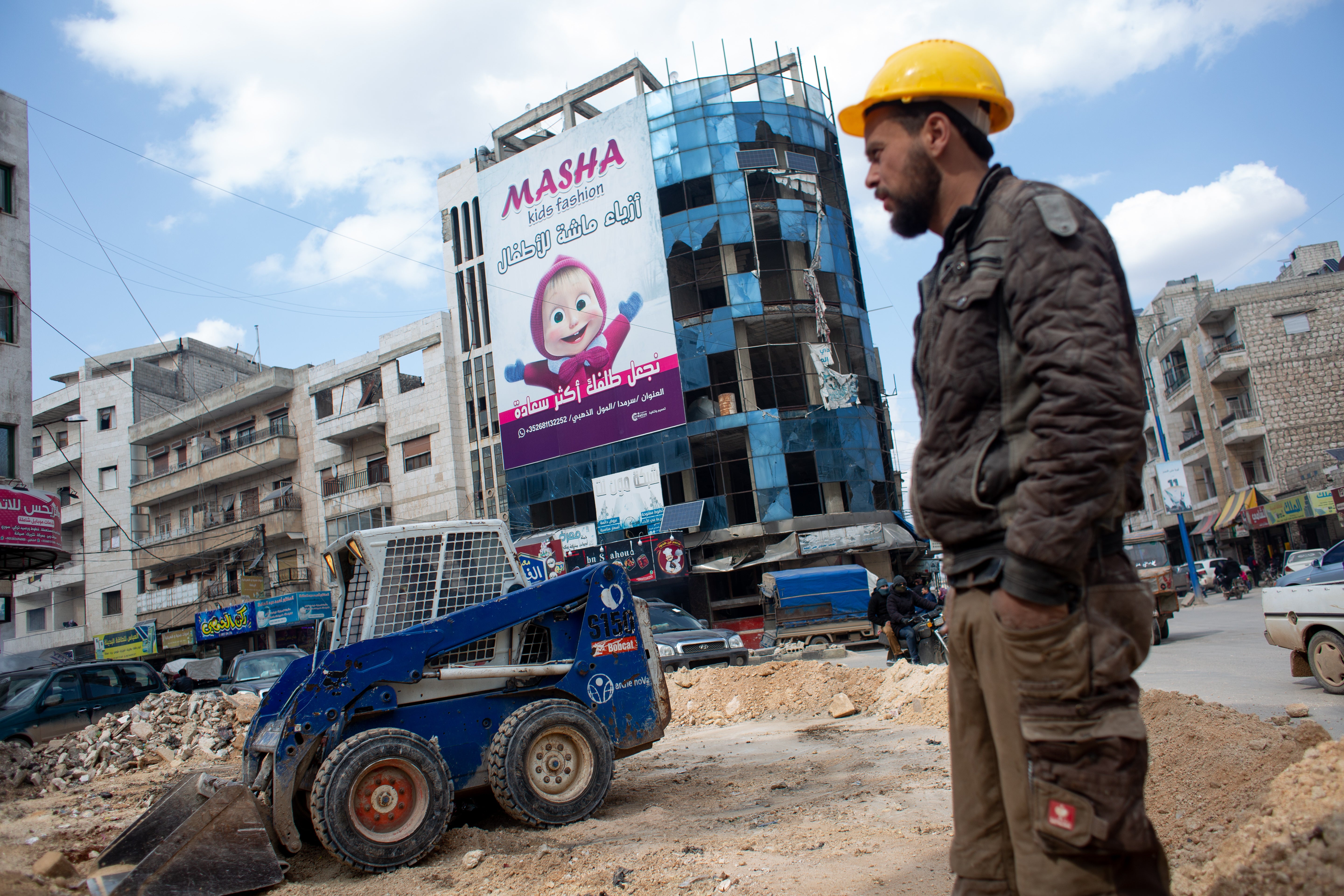
Ahmed Firas al-Lush, a member of the Idlib city council as well as a professor of chemical engineering at the University of Idlib, agrees to meet between classes, at one point apologising profusely that he had to leave because his students were waiting for him.
He describes a list of accomplishments and priorities by the council that include new roads and sidewalks, as well as ongoing electricity, sewage and water infrastructure projects.
“As in any country, when there’s stability there is interest in learning, there is building, there is investment and work,” he says. “Over the last year we have made a lot of progress.”
The signs of change are everywhere, and a visitor to the liberated areas today might be perplexed by the region’s rapid transformation. Idlib University Hospital, a massive white building that is by far the most ambitious construction project undertaken in northwest Syria in more than a decade, opened in October. Before 2020, Syrians hid medical facilities for fear they would be targeted by Russian airstrikes.
Disappointment and despair are the prevailing moods in northwest Syria, and a yearning for a better life persists. Though Turkey is trying to make basics such as electricity and water more available
“If you have war, you will have no capacity to build things. You have nothing but emergencies,” says Mohammad Hossam Sheikh-Fatouh, a director of the hospital. “The ceasefire created a good situation to build a hospital.”
The ceasefire has also drawn others from other parts of Syria as well as Turkey.
The population has exploded. Modest improvements to life here are one draw. New residential and commercial buildings are being built at a feverish pitch, especially in cities such as Idlib, Azaz, Afrin and Sarmada.
Idlib city alone has grown from 200,000 people when the uprising began in 2011 to 500,000 when it was taken from Assad’s grip in 2015 to between 800,000 and 1 million now, says Lush, the municipal council member. The number of cars in the city has doubled to 200,000 in the last several years, with Syrians from former rebel enclaves across the country resettling here. The cars need roads. The people need housing. Their kids need schools.
Despite regular shelling – allegedly at the hands of Kurdish factions opposed to Turkey – in the city of Azaz alone, 80 per cent of those now living there are from elsewhere in Syria, says Rena Netjes, an Istanbul-based Dutch researcher who is writing a book on northern Syria and travelled there extensively.
“People from regime-controlled parts of Syria are coming because they say the economy is even worse there,” she says. “They live in houses that they rent. The poorest, mostly farmers who come from the land, live in tents.”
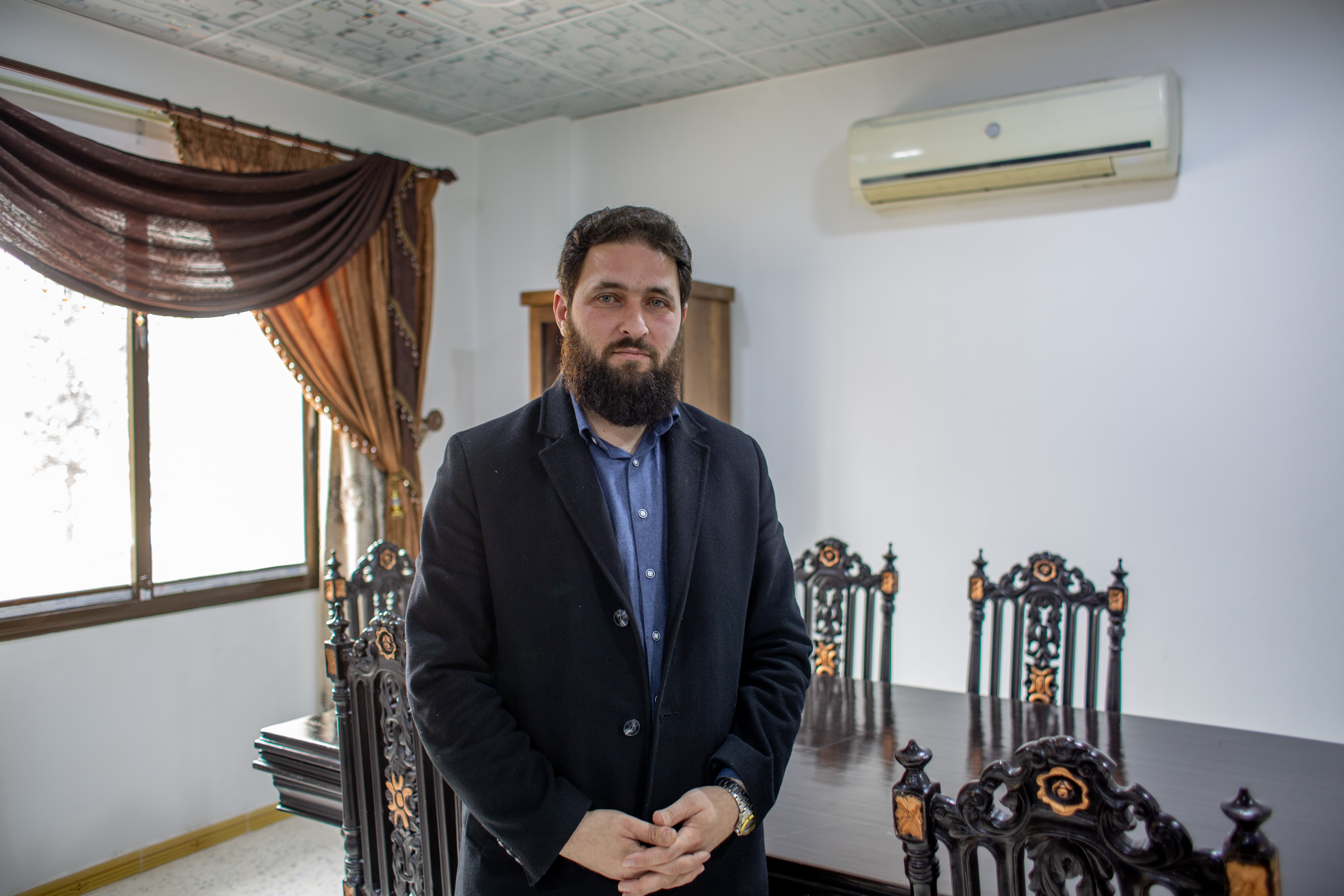
As tensions have eased, travel between the different enclaves has become easier. People from Azaz can shop for olive oil and soaps in the market of Afrin, or visit friends and relatives in Idlib city. Residents complain of tensions between some of the armed groups providing security and local government councils, but little of that has affected people’s lives.
Many of the rebel fighters have returned to university, swelling enrollment at the University of Idlib and the Azaz branch of the University of Aleppo. More than 20,000 students are now enrolled, double the number from before the ceasefire. At the pharmacy college at Idlib University some 700 students are studying, compared to 400 before the ceasefire.
“For two years we have had what you might call a stable situation,” says Hossein Omer, director of the college. “It means we have new labs, new equipment.”
At the Kitab Kafe, a library and coffee shop built into the ruins of a former Idlib hotel, young men and women quietly mingle. “In general, life is much better than it was two years ago,” says Roula, a 26-year-old engineering school graduate.
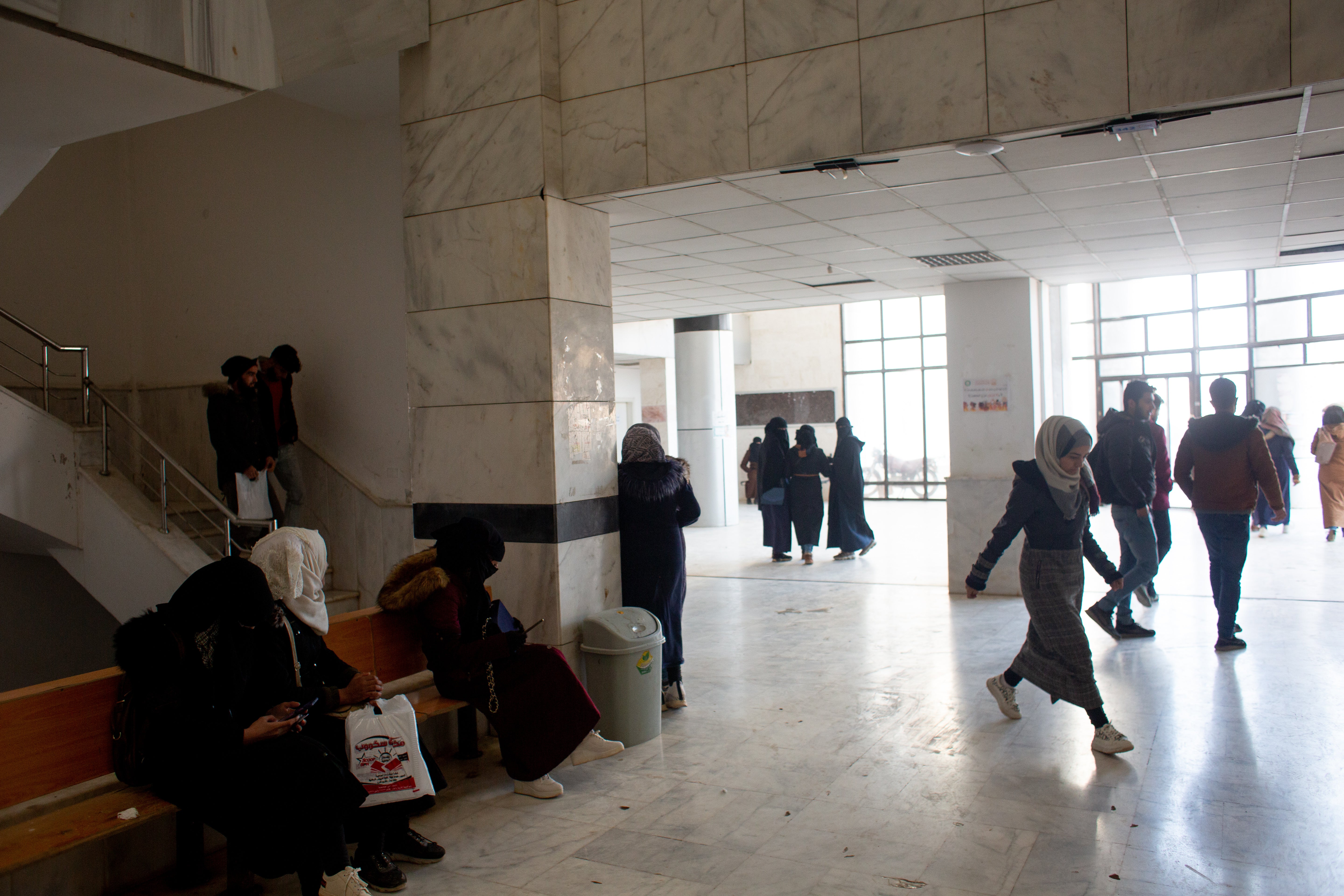
Still, disappointment and despair are the prevailing moods in northwest Syria, and a yearning for a better life persists. Though Turkey is trying to make basics such as electricity and water more available in the liberated areas, little of it is free, the model to which Syrians have long been accustomed.
“Education has improved, healthcare has improved, there are markets, shops and restaurants,” says Sarah Qassem, a journalist and activist in Idlib province. “But It’s highly expensive and I have to pay a lot.”
The liberated region is also a far cry from the vision of a free, democratic Syria pursued by those who poured into the streets to peacefully demand political change more than 11 years ago.
“Most people are making their life, work and studies,” says Hamdou. “But there is something deep in the heart of people that cannot be disappeared.”
In the town of Deir Hassan earlier this year, dozens of people took to the streets to protest the hardline policies of Hayat Tahrir al-Sham, the Islamist group that controls Idlib province. They carried signs demanding the group release detainees and described them as tyrants, according to news reports. The protest was quickly quelled.
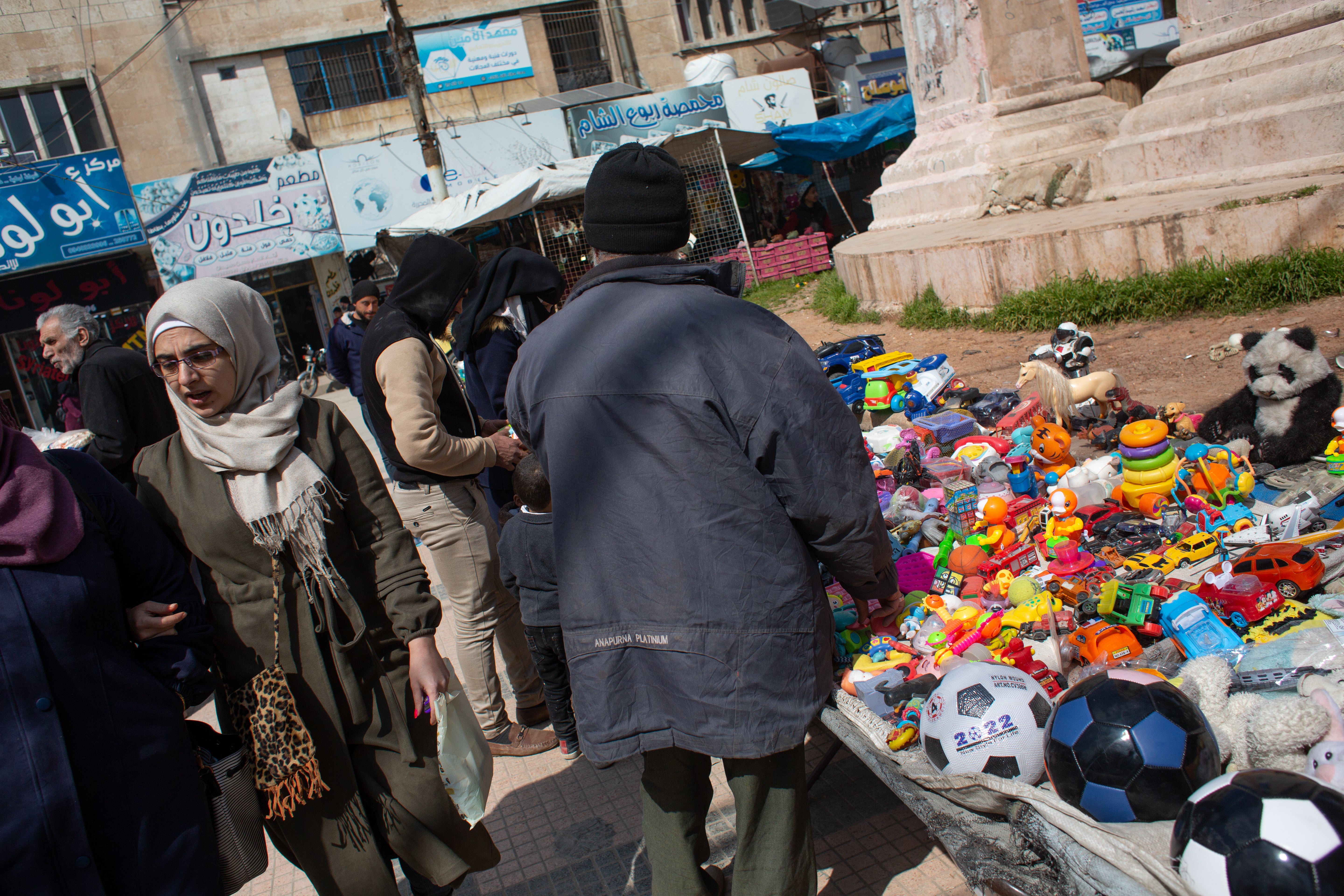
Dreams of a free Syria that inspired an uprising against the cruel dictatorship of Bashar al-Assad more than 11 years ago have long since faded. HTS, the coalition of armed groups under Abu Mohammad al Jolani, who formerly headed Al Qaeda’s Syria branch.
Though Jolani’s men have relaxed some of the social restrictions and hardcore religious mores they had enforced and have allowed a small measure of freedom over the last year, they’re still the major power in Idlib. They control public life through their designates in the so-called National Salvation Government.
“HTS is trying to make people accept it as a moderate group that is not radical,” says Hamdou. “But there is a clash between people and HTS that won’t disappear completely. HTS is reconsidering how they are seeing themselves, how they deal with activists, and how they deal with foreigners and the economy. But what hasn’t changed is their will to control. They want to control everything.”
A report this year by the Bertelsmann Transformation Index, which tracks nations’ democratic progress, accused HTS of “trying to impose authoritarian order with an Islamist agenda” characterised by “religious dogmas” as well as ‘arbitrary arrests, violence and abuse’.”
Areas held by HTS have not had any elections, and local government is either “dominated by armed groups or sidelined by them,” said the report.
The threat of renewed war hangs over Little Syria. Turkey is now threatening to launch a military operation to expand the so-called liberated areas, which Ankara sees as a major success
Roula, the engineering school graduate, said while there is room to speak up, it is very limited. “You can protest, but only against Assad,” she says.
The enclaves in northern Aleppo, including the Afrin and Azaz regions, are the domain of Turkish-backed armed fighters, collection of onetime rebel groups fighting against Bashar al-Assad’s Damascus regime.
The groups, though nominally under the control of the Syrian Interim Government, squabble among each other and have been accused of racketeering, The Bertelsman report described a security sector under the sway of “very localised, often mafia-like, power centres” run by “warlords.”
“There is robbery and banditry,” says Netjes. “People would like the attacks to stop.”
Throughout both enclaves, Turkey is everywhere. The Turkish lira has become the de facto currency of Little Syria. Turkish products flood the markets and Turkish contractors are behind some of the largest building projects. Turkish charities provide food for the destitute and Turkish hospitals support medical facilities.
Turkish troops, mostly invisible, are present and provide a measure of protection for the area from Russian and Iranian-backed Syrian regime forces.
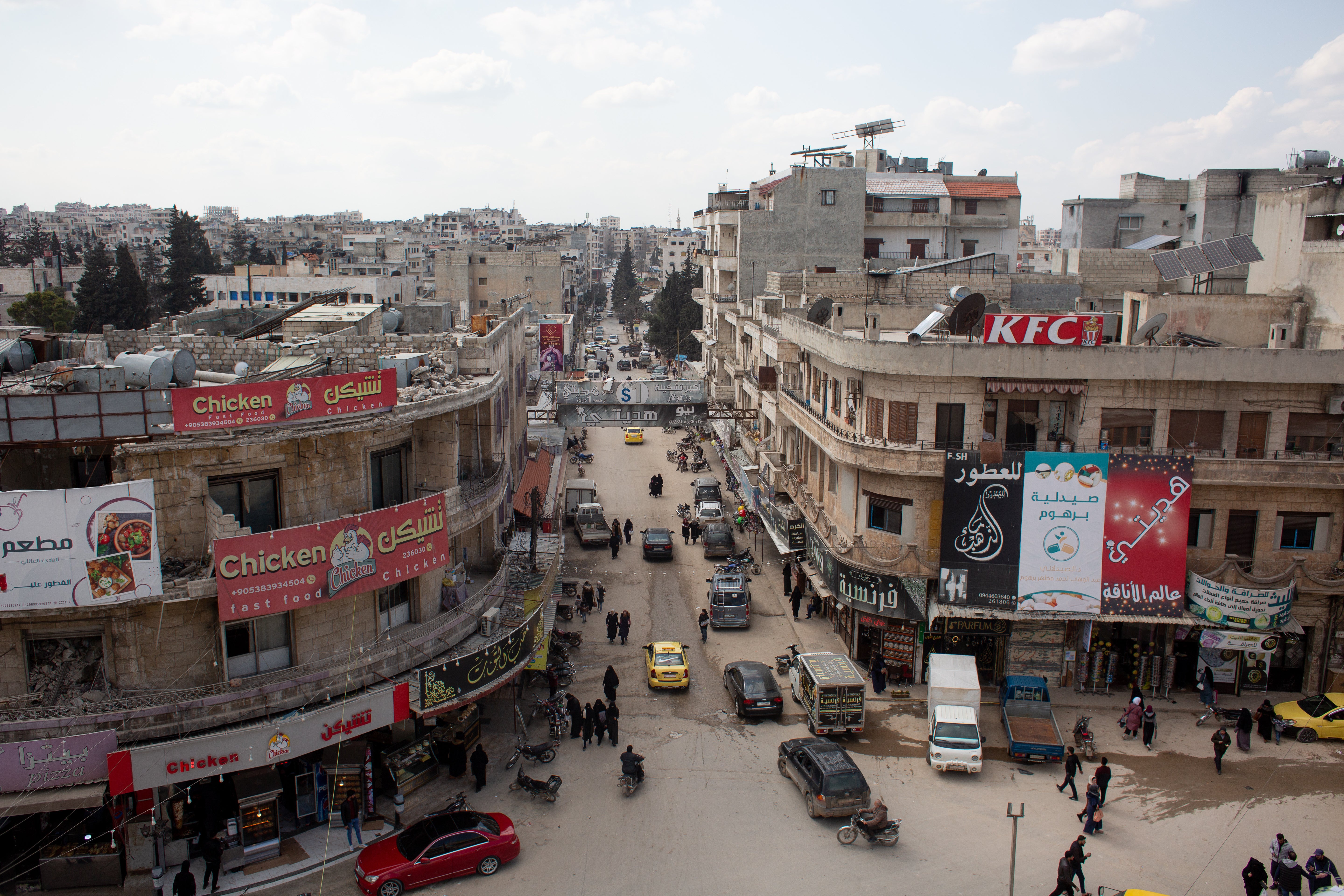
Syrians are uncomfortable with the degree of Turkey’s influence. Of course, the Syrians say, they want to be free and independent. But they also recognise that were it not for the Turkish armed forces, Russian and Syrian forces, possibly working with on-again, off-again allies among Syrian Kurd factions in control of northeastern Syria, would take the region in days.
“It’s not perfect that the Turks are here but it’s better than the Assad regime or Russia,” one senior Syrian official in Azaz told Netjes.
Despite the progress, the threat of renewed war hangs over Little Syria. Turkey is now threatening to launch a military operation to expand the so-called liberated areas, which Ankara sees as a major success. It hopes to seize control from Syrian Kurds of the Tel Rifaat pocket, from which Turkey accuses the armed group there of launching mortar and rocket attacks.
It also has outlined more ambitious plans to seize an area under the control of Syrian Kurds that lies between the pro-Turkish enclave in northern Aleppo and areas it controls in Hasaka province which Ankara seized control of in a weeklong military operationin late 2019, an effort to build a land bridge between two areas under its sway.
All of this could quickly unravel an already fragile peace which depends on the whims of regional and global superpowers.
The shaky bedrock upon which Little Syria rests stretches back to late 2019. That was when Syrian forces, emboldened by victories over rebel forces in the summer and backed by Russian air power and pro-Iranian militias launched a ferocious military offensive to retake Idlib province, once and for all. Russian bombs and Syria artillery fell discriminately on civilians in what was called Operation “Dawn of Idlib 2”.
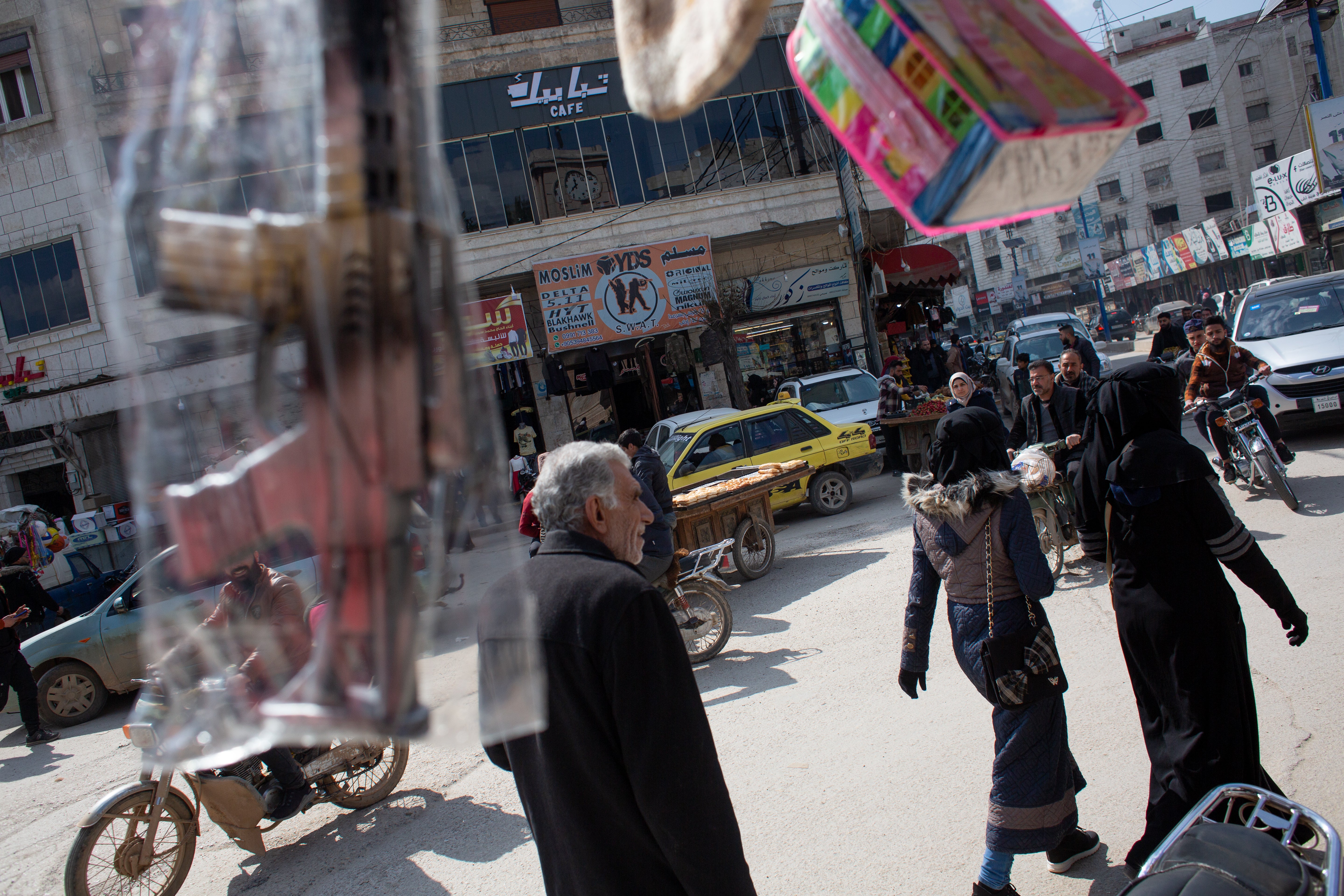
“Entire families, some who have fled from one corner of Syria to the other over the course of the past decade, are tragically finding that bombs are part of their everyday life,” the then United Nations High Commissioner for Human Rights, Michelle Bachelet, warned at the time.
But the offensive went too far. Either a Russian or Syrian airstrike struck a Turkish observation post, killing 34 Turkish soldiers in Idlib. Turkey intervened forcefully launching Operation “Spring Shield”.
Using combat drones, including the famous Bayraktar TB2 now used against Kremlin forces in Ukraine, precision artillery and fighter jets, Turkey devastated the Syrian regime forces to kill dozens of Syrian troops as well as Hezbollah fighters. Turkey destroyed untold numbers of helicopters, tanks, armoured vehicles, howitzers, ammunition trucks, air defence systems and weapons depots, It targeted air bases and scientific labs.
The intensity of the Turkish counter-offensive reversed the momentum of the Russian-backed assault. Turkish President Recep Tayyip Erdogan and his Russian counterpartVladimir Putin met in Moscow and hammered out a ceasefire deal that despite regular violations, has endured to this day.
The ceasefire era also coincided with a severe downturn in Turkey’s economy that turned a seemingly already xenophobic Turkish population decisively against the millions of Syrians and others who have settled in the country. Erdogan found himself under pressure from the right and left, and the promise of creating a safe zone that would lure Syrians in Turkey to return, or at least entice some to stay put.
Most people inside Little Syria acknowledge very few Syrians inside Turkey are returning to the enclave, but that could change. Both the Turkish government and its centre-left and nationalist opponents have begun agitating to make life more difficult for Syrians inside Turkey. In the Turkish press, day after day, there are warnings that Syrians could be forced back en masse, deported into Little Syria ahead of crucial national elections next year.
Syrians are terrified that Ankara could betray their enclave in some deal with Moscow, or even Damascus. Russia, Turkey and Iran held two days of talks on Syria in the Kazakh capital beginning Wednesday, with envoys of both the opposition and the Damascus regime present. Turkish opposition politicians who are leading in polls have strongly hinted they are open to restoring good relations with the Assad regime. The pipeline of international aid which is the lifeblood of the displaced living in Little Syria’s camps could be cut off next month if members of the United Nations Security Council fail to come up with an agreement. The current agreement expires on 10 July.
At the neonatal centre of the maternity hospital, run by the non-profit Syrian American Medical Society, Dr Huzeirah warns that all of the gains made over the past two years could be wiped away in an instant. “It’s very hard to rebuild and gain people’s confidence and make them feel safe,” she says. “It’s very easy to destroy everything.”




Join our commenting forum
Join thought-provoking conversations, follow other Independent readers and see their replies
Comments